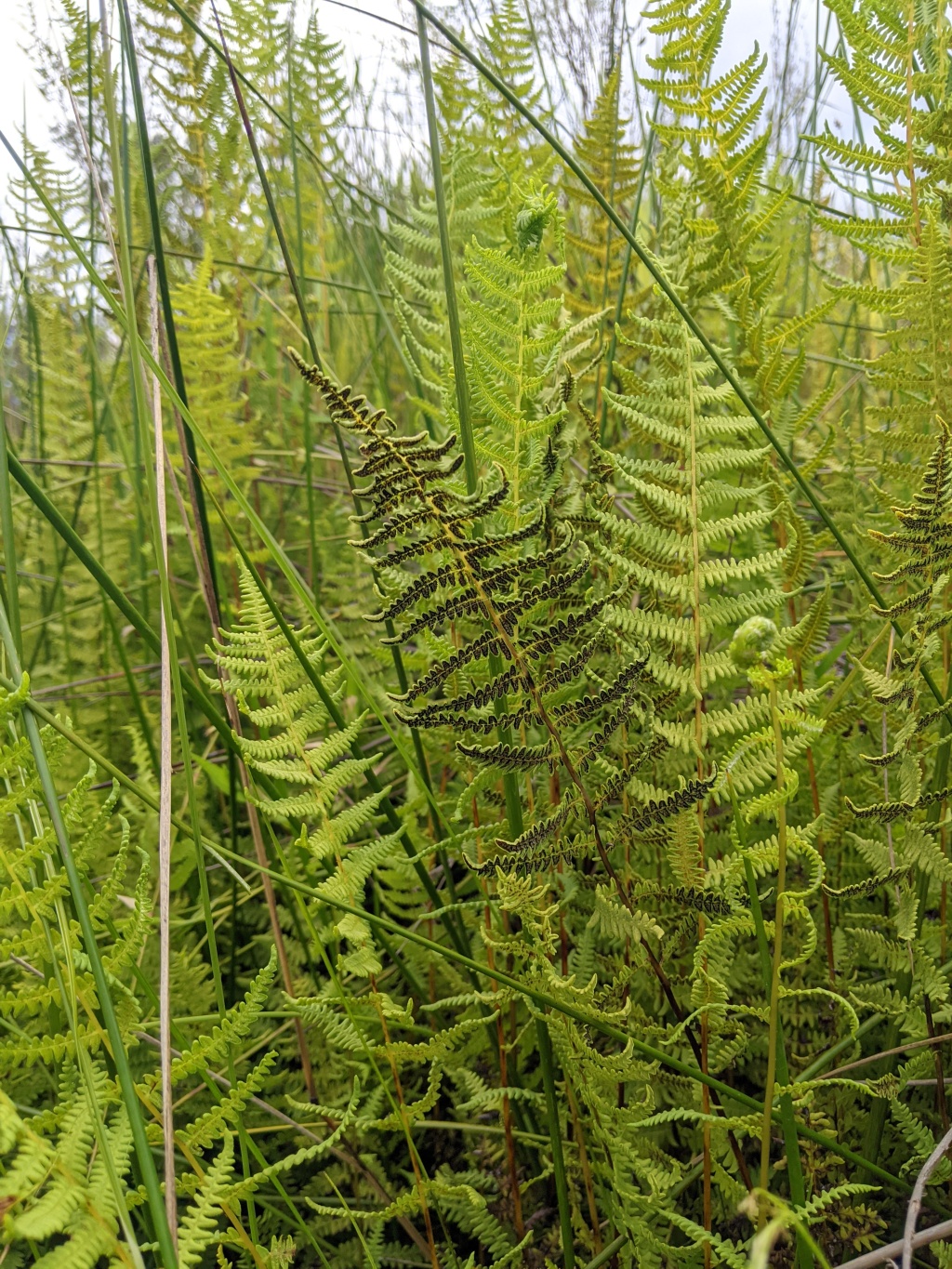Thelypteris confluens
(Thunb.) C.V.MortonRhizome creeping, slender and branched, growing tips covered in broad scales. Fronds erect, 30–100 cm tall; stipe longer or shorter than lamina, dark brown at base, paler and flattened above, shallowly grooved, glabrous with few broad scales at base. Lamina oblong-lanceolate, almost 2-pinnate, dull-green, herbaceous; rachis and pinnae mid-rib deeply grooved, grooves not connecting; lower surface of rachis and veins with papery, pale brown, ovate-orbicular scales and small scattered hairs. Lower pinnae slightly shorter than middle pinnae (pinnae of fertile fronds narrower), sessile, oblong to linear-oblong, lobed almost to midrib; lobes oblong, margins slightly wavy and strongly recurved on fertile fronds; veins free. Sori small, round but often coalescing; indusium kidney-shaped, papery, with short glandular hairs; spores brown.
NIS, HNF. Also Qld. New Zealand, North America, west and south Africa, New Guinea, Sumatra, India. Thelypteris confluens is known only from one locality in Victoria, a peaty swamp near Tawonga in the Kiewa Valley.
The erect, almost 2-pinnate fronds bearing relatively large scales and kidney-shaped, glandular hairy indusia make this a distinctive fern.
Entwisle, T.J. (1994). Ferns and allied plants (Psilophyta, Lycopodiophyta, Polypodiophyta). In: Walsh, N.G.; Entwisle, T.J., Flora of Victoria Vol. 2, Ferns and Allied Plants, Conifers and Monocotyledons, pp. 13–111. Inkata Press, Melbourne.
 Spinning
Spinning

